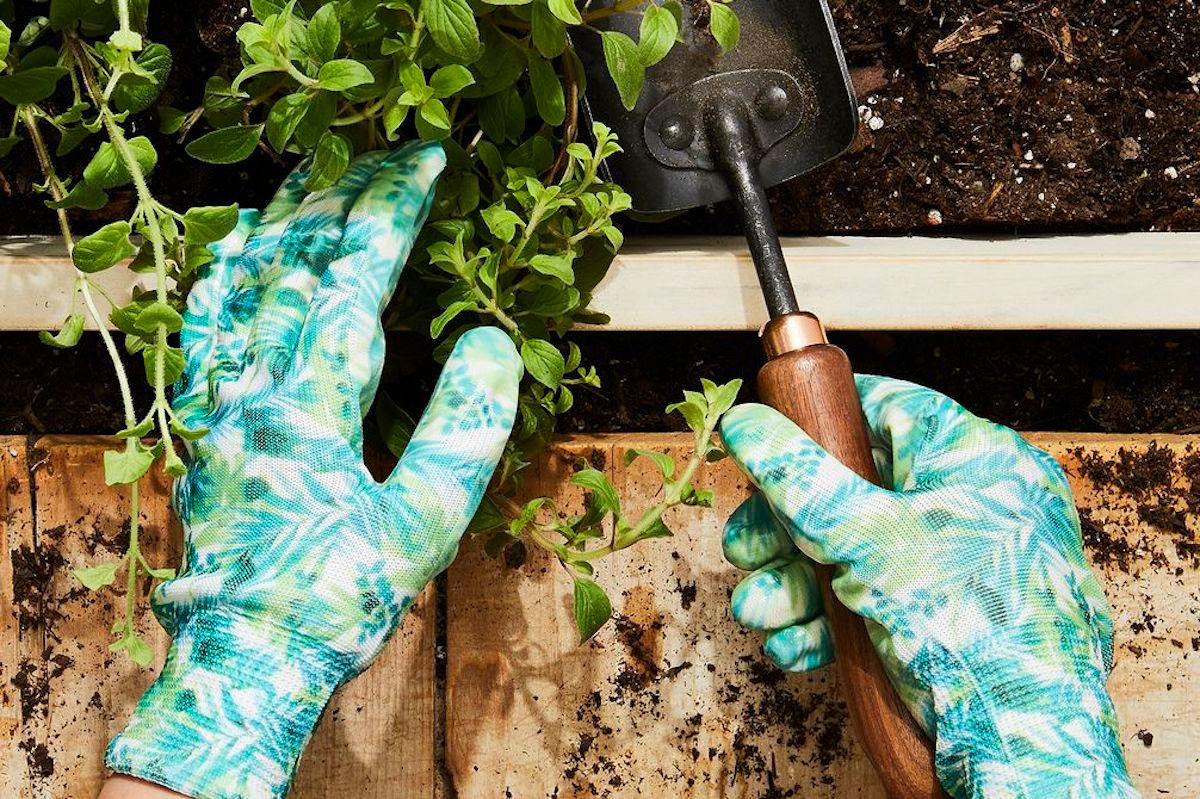I'm always looking for ways to make gardening more streamlined, so when I stumbled across the concept of a keyhole garden, my interest was officially piqued. These garden beds look like raised beds — and it's no secret we love a raised bed — but they have an ingenious added feature that makes them even more efficient and easy to care for.
Naturally, I needed to know more about keyhole gardening and whether it's as game-changing as it seems, so I reached out to a few master gardeners to pick their brains. Here's what I learned.
* * *
What is a keyhole garden, exactly?
At first glance, keyhole gardens might look like your average raised bed, but there are some key (sorry, I couldn't resist!) differences — starting with the shape. Keyhole gardens are often circular, and they have a cut-out that leads to the center of the garden — if you looked at it from above, it resembles a keyhole, hence the name.
This path allows you to access all areas of the bed, but it serves another purpose as well: "Unlike regular raised beds, keyhole gardens use the center of the garden bed as the compost area where plant debris from yard waste and vegetable scraps are decomposed right in the garden," explains Angelo Randaci, Master Gardener and Horticulture Expert at Earth's Ally. "This provides a central composting and watering area."
Just like raised beds, keyhole gardens can be built from a variety of materials. "A keyhole garden can be constructed from many different types of inexpensive materials such as bricks, concrete blocks, rocks, and other inexpensive stackable materials," says Randaci. If you opt to build one using wood, he recommends avoiding treated lumber and adding a plastic liner to prevent the wood from rotting.
As for the composting area in the center, most people simply form a cylinder using chicken wire, vertically placed sticks, or another porous material. (If you use wire, you may need to place support stakes around the edges to ensure the form doesn't collapse under the pressure of the soil around it.) You also want the composted material to be able to mingle with the bed's soil: "Make sure your composting container has plenty of holes to allow water, worms, and other beneficial creatures access," says Randaci. He also recommends putting a lid on the basket to prevent the compost from getting too wet or dry, and putting a layer of rocks at the bottom of the compost chute to promote drainage.
A few other things to note when designing your keyhole garden:
- Make sure the bed isn't too big, otherwise the nutrients from the compost basket may not reach the edges when you water. In general, your bed should be six feet or less in diameter so nutrients only have to travel three feet in any direction.
- Slope the soil down away from the compost cage to help nutrients flow all the way to the outside edges of the bed.
- Choose a location that's level and not prone to flooding.
* * *
What are the benefits of keyhole gardening?
Traditional raised beds offer plenty of benefits on their own — fewer weeds, no tilling, and less bending, to name a few—and keyhole gardens offer all these same perks, plus a few extras.
"Since the composting and the growing plants share the same garden space, they create an easy-to-manage garden that uses less water, continually feeding the plants by adding micronutrients," explains Randaci. This is particularly beneficial if the soil around your home lacks nutrients — plants will love the fertile keyhole garden!
That's not the only benefit, either. Venelin Dimitrov, Senior Product Manager at Burpee explains that keyhole gardens also make it easier to tend your plants: "A wedge-shaped path is cut through the center of the raised bed to provide easy access to all areas of the garden — no need to bend over when planting, tending, and harvesting."
* * *
What should you plant in a keyhole garden?
In general, our experts recommend placing your keyhole garden in a full-sun area that receives at least six hours of sunlight a day. If this is the case, you'll be able to plant any sun-loving flowers or vegetables, but there are a few caveats to keep in mind.
"You'll want to plant smaller varieties in a keyhole garden, as larger crops may overtake the space and not do as well," says Dimitrov. "Leafy greens like lettuce and kale, plus small root vegetables like carrots and radishes do well. Tomatoes and strawberries are great options as well!"
* * *
But won't the compost smell?
In theory the compost basket in the center of your keyhole garden shouldn't smell, but there's always a chance it gets a little stinky if it's out of balance. (Don't worry, it's easy to fix!)
"A foul smell is a sign that your compost pile is out of balance," explains Dimitrov. "There could be a number of things causing this — too much green material, not enough aeration, or too much moisture. You'll want to make sure to have a proper balance of browns, including dry leaves, newspaper, wood chips or cardboard, and greens, including food scraps, grass clippings or weeds in your pile. A 3-to-1 ratio of browns to greens is recommended."
It's also important to get in there and turn the compost pile every three or four weeks to ensure proper aeration. Try to keep the compost level at the same height or slightly above the soil for optimal results.
If you follow these design and maintenance tips, your keyhole garden will thrive with minimal intervention on your part, and I'm betting you'll never want to go back to traditional raised beds!




Shares